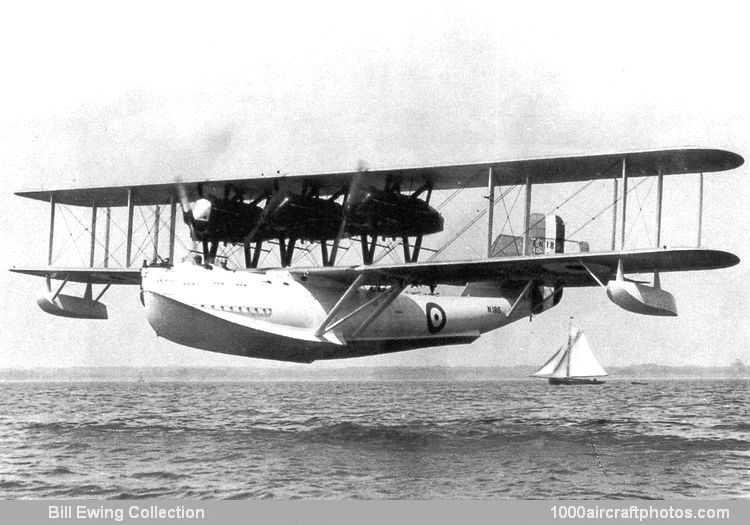08/31/2014. Remarks by Johan Visschedijk: "The Saunders Valkyrie was the company's third design and represented a bold attempt to enter the production field of large flying boats, dominated at the time by Short, Blackburn, and Supermarine. Designed as a military general purpose machine, the Valkyrie was of all-wooden construction with fabric covered flight surf aces, apart from the lower mainplane center section which had plywood skinning. The monocoque hull, over 60 ft (18 m) in length, embodied all the extensive experience of the company in hydrodynamics and hull construction, and, smoothly covered by 'Consuta' copper-sewn plywood, was a thing of beauty with efficiency in every line. The crew of five were provided with open cockpits, one in the bows for a gunner, two in tandem with raised decking for the pilots, and two in staggered positions aft of the mainplanes for the 'midships gunners.
Navigation and wireless cabins lay within the hull, together with cooking and rest facilities for the crew. The power units were three tractor 650 hp Rolls-Royce Condor IIIAs, driving two-bladed propellers and gravity-fed with fuel from two 552 gal (2091 l) tanks situated in the upper mainplane center section. The 97 ft (29.57 m) span mainplanes were raised slightly above the hull on a broad pylon, being supported on either side from the hull by massive 'N' struts, while the tail plane was of monoplane construction with a single fin and servo-operated rudder. A similar control system to that of the A.4 Medina was fitted, utilizing jointed metal rods in place of the conventional stranded wires of most machines of the period.
Serialed N186, the Valkyrie made its first flight in 1927, and at a loaded weight of 26,600 lb (12,066 kg) attained a maximum speed of 125 mph (201 kmh), a maximum ceiling of 15,000 ft (4,572 m), and a stall speed of just below 60 mph (96 kmh). On August 12, 1927, the Valkyrie left Felixstowe in company with three other flying boats for a Baltic cruise of 9,400 mls (15,224 km), which it completed with-out incident, returning to Felixstowe for further test flying.
Ironically, its construction proved to be its downfall, for the advent of the metal hull in the same year as its appearance rendered the machine useless for development unless the time and expense of providing it with a metal hull proved worthwhile. In the light of these facts a reluctant decision was made to abandon the Valkyrie, and to concentrate instead upon the design of a standard method of metal hull construction to be used for all future machines. This was accomplished in less than a year, the first metal hull being fitted to a Southampton superstructure to form the Saunders A.14."
